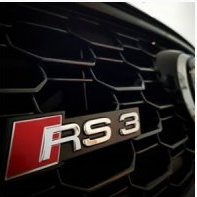plastic vs ceramic turbo
Announcements
-
Similar Content
-
Latest Posts
-
Whoa, that's a name I've not see for a long time! Sorry to hear about the engine / turbo damage. Fwiw with any engine problems it often really a case of just seeing what happens when it's apart, ymmv - I wouldn't rule out the possibility that the damage isn't even from the turbo failure, or possibly from a combination. The airflow between cylinders isn't dead even, injectors can go off over time as well, with the turbos overboosting if you didn't have upgraded fuel system there could have possibly been a bit of leaning out - stock triggering is often a bit unreliable by this age too. Basically its an old engine and a few things could have been going on, and you won't know how much work is needed until the engine is apart.
-
I'm just shocked there's a euro driver on our roads who is thinking of other road users and not attempting to blind everyone. I wonder if Prank uses his indicator too...
-
Its hard to tell really. The Q50 owner's forum talks about it a lot and has quite a few people directly affected, but no idea what % of cars sold actually had the block replaced. Also, there seem to be 2 distinct issues which both get diagnosed by Infiniti as requiring a block replacement (no wonder they are going broke) 1. "Porous block" where coolant mixes with oil through thin or poorly cast parts of the block 2. Head coolant gallery plugs not sealing. If I was noticing engine coolant loss I'd start with cooling system pressure test (as always) and then I'd pull the cam covers and reseal the coolant gallery plugs on both side before worrying about a potentially porous block. If neither of those did the trick it would be put in a second hand engine out of japan; I haven't checked pricing but I'm sure there are plenty around by now as they've been in production 10+ years
-
To clarify what I posted above, I thought you both had a situation where it cancelled sooner one way than the other.....if it is reasonably even where it cancels in either direction that is probably normal (consider gentle movements like lane changes, you don't want it to need half a turn of lock to turn the indicators off)
-
Son, in this country, that is a piece of Gyprock. f**king drywall. FFS! I also like the autocorrect of trailer to tablet. I was reading it and thing, "what the hell drugs is he on?" Then the photo made it clear enough.
-







Recommended Posts
Create an account or sign in to comment
You need to be a member in order to leave a comment
Create an account
Sign up for a new account in our community. It's easy!
Register a new accountSign in
Already have an account? Sign in here.
Sign In Now